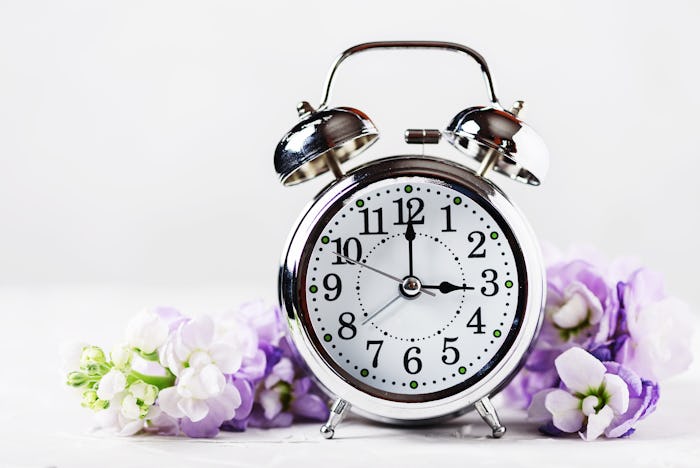Life
Say Goodbye To An Hour Of Sleep — Daylight Saving Time Will Be Here Before You Know It
If you're anything like me, the only reason you even know what month you're in is because you found a school event calendar crumpled up in your kids' laundry. As if your schedule wasn't hectic enough, you have to factor in that this country still uses Daylight Saving Time and you may be losing (or is it gaining?) an hour soon. So, when does daylight saving time 2018 begin? And what are you supposed to do with your clocks?
It might be helpful to know that, according to Time and Date, daylight saving time happens twice in one year — in North America daylight saving time "usually starts in March-April and ends in September-November." Since these time changes coincide with spring and fall respectively, the old adage of "spring forward and fall back" corresponds to moving your clock ahead an hour or back an hour.
So what day does daylight saving time begin for the 2018 year? The classic American standard, The Old Farmer's Almanac, noted that daylight saving time starts at 2 a.m. on Sunday, March 11, 2018. This means you should probably set your clocks ahead by one hour on Saturday night before you go to bed since you'll likely be sleeping when the actual time change occurs. By adjusting your various time-keeping devices in advance, you'll hopefully avoid any potential schedule fails. There's nothing like that horrible panic when you realize you've overslept because you forgot.
If you're wondering to yourself why in the world daylight saving time is still a thing, don't worry — you're definitely not alone. In fact, certain states in the United States don't even observe this method of extending daylight hours at all. According to Time, Arizona, Hawaii, and the United States territory of Puerto Rico do not use daylight saving time. Basically, the reason these places don't spring forward and fall back like the rest of the country has to do with their location. In the aforementioned Time article, it seems that the warm weather, proximity to the equator line, and an abundance of sunshine is what made daylight saving time unnecessary for such places. My partner argues, however, that modern living — complete with electricity — renders the need for squeezing the most light out of the day pointless. Yet the majority of the United States continues to add and subtract an hour every year like clockwork (yes, the pun was definitely intentional).
You can always use this interesting practice as a quick history lesson for your kids, too. Though some believe that daylight saving time was created to lengthen the day for farmers and the agricultural industry in general, that was never truly the driving force behind the movement. According to the official website for the History Channel, historical records indicate that daylight saving time was established in an effort to save electrical energy during World War I. The clock changing concept was only bolstered by World War II, since conserving resources nationwide was a major issue in the United States during that time period.
Whether you find the wartime conservation effort or efficient farming practices origin stories to be fascinating or not, know you have something interesting to add the next time you're stuck making small talk at an office party. So on Saturday, March 10 of this year, save yourself from any middle of the night panics (did I set my alarm correctly?) and move your clocks forward one hour. Remember that daylight saving time begins in the wee hours the following morning. Go ahead and get an extra shot of espresso (or two); no one is judging.
Check out Romper's new video series, Bearing The Motherload, where disagreeing parents from different sides of an issue sit down with a mediator and talk about how to support (and not judge) each other’s parenting perspectives. New episodes air Mondays on Facebook.
